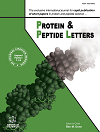- Home
- A-Z Publications
- Protein and Peptide Letters
- Previous Issues
- Volume 25, Issue 12, 2018
Protein and Peptide Letters - Volume 25, Issue 12, 2018
Volume 25, Issue 12, 2018
-
-
Synthetic Cross-linking of Peptides: Molecular Linchpins for Peptide Cyclization
More LessAuthors: Ratmir Derda and Mohammad R. JafariPeptide-derived drugs constitute a significant fraction of therapeutic agents. In 2013, The global market of peptide therapeutics was ca. $19 billion; this value does not include revenue from insulin derivatives of $28 million. The combined sales of insulin and non-insulin peptide drugs is estimated to exceed $70 billion by 2019. A significant fraction of peptide-derived drugs is composed of an amino acid sequence and additional che Read More
-
-
-
Peptidomimetics Targeting Protein-Protein Interactions for Therapeutic Development
More LessAuthors: Gan Zhang, Jessica Andersen and Guillermo Gerona-NavarroBackground: Interactions between proteins play a key role in nearly all cellular process, and therefore, its dysregulation may lead to many different types of cellular dysfunctions. Hence, pathologic Protein-Protein Interactions (PPIs) constitute highly attractive drug targets and hold great potential for developing novel therapeutic agents for the treatment of incurable human diseases. Unfortunately, the identification of PPI inhibitors Read More
-
-
-
Anti-Infective Peptides to Enhance the Host Innate Response: Design, Development and Delivery
More LessBackground: Inducible Nitric Oxide Synthase (iNOS or NOS2) produces Nitric Oxide (NO) and related reactive nitrogen species, which are critical effectors of the host innate response and play key roles in the intracellular killing of bacterial and parasitic pathogens. The SPRY domain- containing SOCS box proteins SPSB1 and SPSB2 are key physiological regulators of this important enzyme. Disrupting the endogenous SPSB-iNOS i Read More
-
-
-
Stealth Peptides Target Cellular Powerhouses to Fight Rare and Common Age-Related Diseases
More LessBackground: Mitochondria are the primary source of energy in most tissues. Mitochondrial dysfunction results in cellular energy deficiency, triggers the production of reactive oxygen species, and initiates various cell death and inflammatory pathways. Several cell-permeable peptides (SS peptides) have been described that selectively target cardiolipin on the inner mitochondrial membrane and promote efficiency of the el Read More
-
-
-
The Synthesis of Sulfated CCR5 Peptide Surrogates and their Use to Study Receptor-Ligand Interactions
More LessAuthors: Fred Naider and Jacob AnglisterBackground: Tyrosine sulfation is an important post-translational modification of secreted and membrane proteins in multi-cellular organisms. This modification is catalyzed by tyrosylprotein sulfotransferases that often modify tyrosine residues in their target substrates in a heterogeneous manner. Chemokine receptors such as CCR5, which play roles in inflammation, immunity and viral infection, are sulfated on tyrosine resi Read More
-
-
-
Breakthroughs in Venom Peptide Screening Methods to Advance Future Drug Discovery
More LessAuthors: Tanya Napolitano and Mandë HolfordBackground: Venom peptides are a proven resource for identifying novel drugs, however the process of identifying bioactive venom peptides is currently labor intensive, costly, and rarely results in pharmaceutical success. As venom peptides are modulators of ion channels and receptors their potential for manipulating cell signals in diseased states are unique and offer an untapped resource for finding new medicines. Rec Read More
-
-
-
Structurally Constrained Insulin Analogs by Directed Stepwise Crosslinking
More LessAuthors: Fa Zhang, John P. Mayer, Vasily Gelfanov, Fa Liu and Richard D. DiMarchiBackground: Research has been directed at the optimization of insulin for medicinal purposes. An insulin analog that could be reversibly activated might provide more precise pharmacokinetic control and broaden the inherent therapeutic index of the hormone. The prospect of using intramolecular structural constraint to reversibly inactive insulin might constitute the first step to achieving such an optimized analog. Ch Read More
-
Volumes & issues
-
Volume 32 (2025)
-
Volume 31 (2024)
-
Volume 30 (2023)
-
Volume 29 (2022)
-
Volume 28 (2021)
-
Volume 27 (2020)
-
Volume 26 (2019)
-
Volume 25 (2018)
-
Volume 24 (2017)
-
Volume 23 (2016)
-
Volume 22 (2015)
-
Volume 21 (2014)
-
Volume 20 (2013)
-
Volume 19 (2012)
-
Volume 18 (2011)
-
Volume 17 (2010)
-
Volume 16 (2009)
-
Volume 15 (2008)
-
Volume 14 (2007)
-
Volume 13 (2006)
-
Volume 12 (2005)
-
Volume 11 (2004)
-
Volume 10 (2003)
-
Volume 9 (2002)
-
Volume 8 (2001)
Most Read This Month
Article
content/journals/ppl
Journal
10
5
false
en


